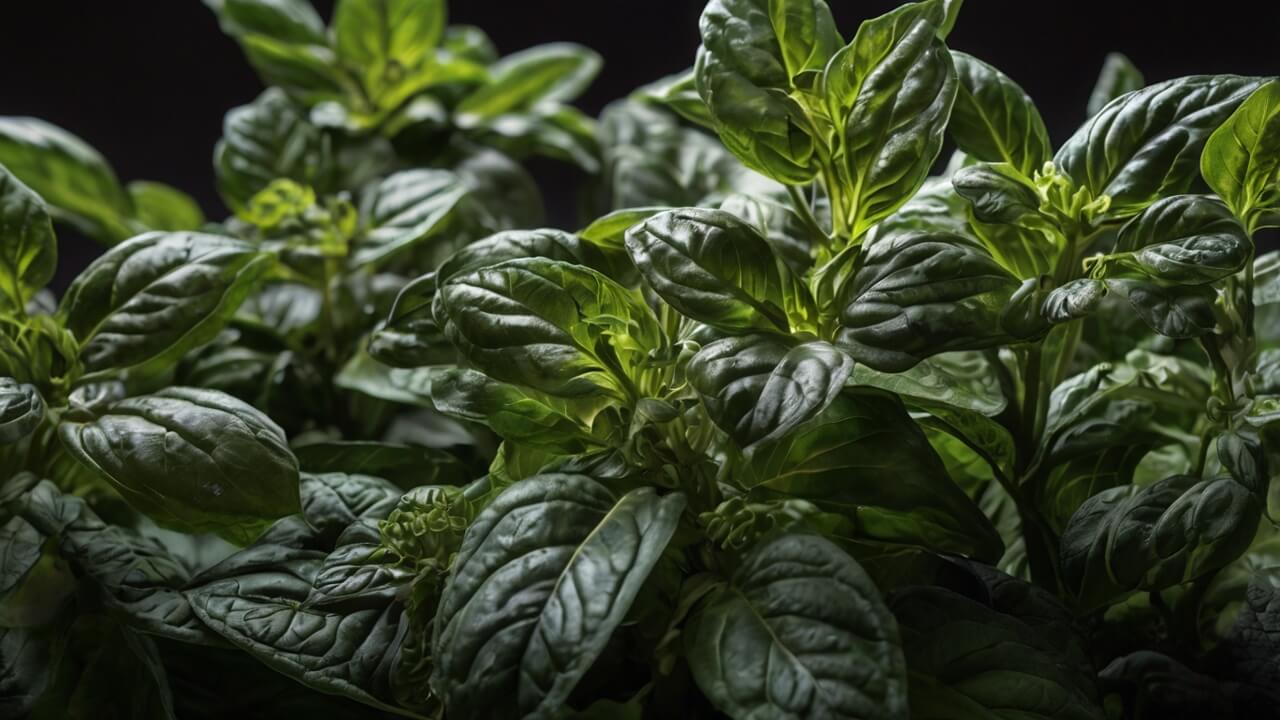African blue basil, also known as clove basil or Haitian basil, is a unique and flavorful herb that has been used in various culinary traditions across Africa, the Caribbean, and parts of Asia.
With its distinct aroma and taste, this basil variety offers a delightful twist to many dishes, adding depth and complexity to flavors.
This herb boasts a rich, slightly peppery flavor profile with hints of clove, cinnamon, and licorice. Its fragrant leaves are a deep purple-blue hue, making it a visually striking addition to any dish.
African blue basil’s versatility lies in its ability to complement a wide range of ingredients, from savory meats and vegetables to sweet desserts and beverages.
In African cuisine, this basil variety is a staple ingredient, often used in stews, curries, and marinades. Its robust flavor pairs exceptionally well with spices like cumin, coriander, and chili peppers, creating a harmonious blend of aromatic notes.
Similarly, in Caribbean and South Asian cooking, African blue basil is prized for its unique flavor profile, adding depth to rice dishes, chutneys, and curries.
Beyond its culinary applications, African blue basil holds cultural significance in many regions. In parts of West Africa, it is believed to possess medicinal properties and is used in traditional remedies.
Additionally, the herb is often incorporated into religious and spiritual ceremonies, highlighting its deep-rooted connection to various cultures.
With its captivating flavor and versatility, African blue basil has gained popularity among home cooks and professional chefs alike, offering a unique and exciting addition to a wide array of dishes.
Whether used as a garnish, infused into oils or vinegars, or as a key ingredient in a recipe, this remarkable herb has the power to elevate and transform ordinary meals into extraordinary culinary experiences.
Apple Pecan Salsa with African Blue Basil
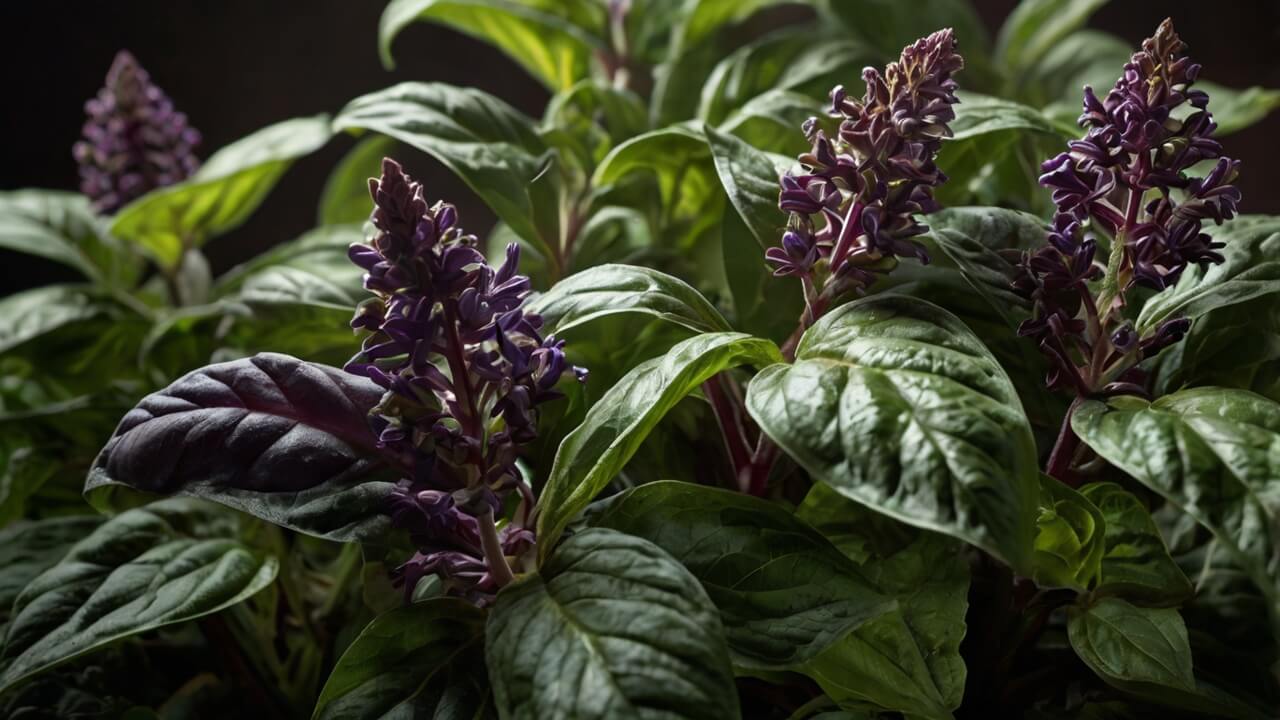
Ingredients:
- 2 large apples, diced (Honeycrisp or Gala work well)
- 1/2 cup diced red onion
- 1/4 cup chopped pecans
- 1/4 cup chopped fresh African blue basil
- 2 tablespoons apple cider vinegar
- 1 tablespoon honey
- 1 teaspoon Dijon mustard
- 1/4 teaspoon salt
- 1/4 teaspoon black pepper
Directions:
- In a mixing bowl, combine the diced apples, red onion, pecans, and chopped African blue basil.
- In a separate small bowl, whisk together the apple cider vinegar, honey, Dijon mustard, salt, and black pepper.
- Pour the vinegar mixture over the apple mixture and gently toss to combine.
- Cover and refrigerate for at least 30 minutes to allow flavors to meld.
- Serve chilled or at room temperature.
Pairings and Serving Ideas:
This refreshing and flavorful salsa pairs beautifully with grilled or roasted meats, such as pork tenderloin or chicken. It also makes an excellent topping for fish tacos or as a dip for tortilla chips. The sweetness of the apples, combined with the nutty pecans and the distinct flavor of African blue basil, creates a delightful contrast of flavors and textures.
For a complete meal, consider serving the salsa alongside grilled vegetables or a fresh green salad. It can also be used as a topping for bruschetta or crostini, making it a versatile and exciting addition to any appetizer spread.
African-Blue Basil & Lavender Pesto
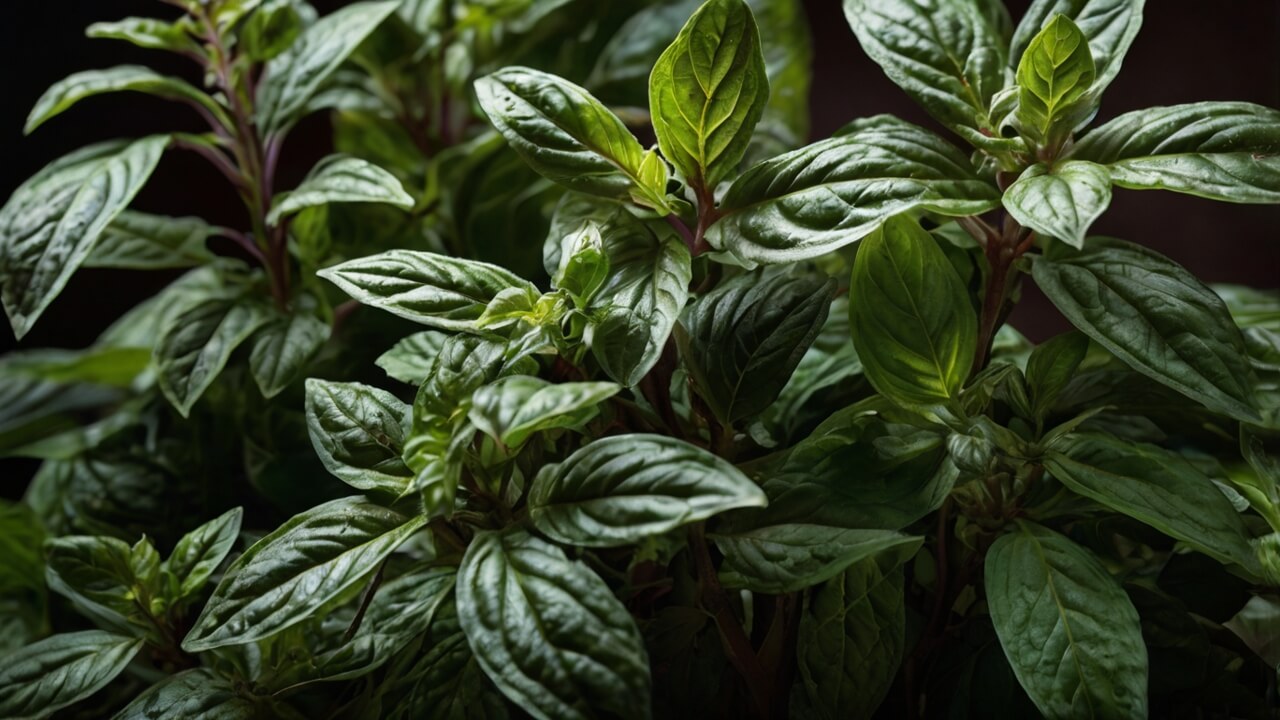
This unique pesto combines the vibrant flavors of African blue basil with the floral notes of lavender, resulting in a delightfully aromatic and versatile spread or sauce.
Ingredients:
- 2 cups fresh African blue basil leaves, packed
- 1/2 cup fresh lavender flowers (or 2 tablespoons dried lavender)
- 1/2 cup toasted pine nuts
- 1 garlic clove, minced
- 1/2 cup grated Parmesan cheese
- 1/2 cup extra-virgin olive oil
- 2 tablespoons lemon juice
- 1/4 teaspoon salt
- 1/4 teaspoon black pepper
Preparation:
- In a food processor, combine the African blue basil leaves, lavender flowers, pine nuts, garlic, and Parmesan cheese. Pulse until coarsely chopped.
- With the machine running, slowly drizzle in the olive oil until the pesto reaches your desired consistency.
- Transfer the pesto to a bowl and stir in the lemon juice, salt, and black pepper. Taste and adjust seasoning as needed.
Tips for Using Pesto:
- Toss with hot pasta for a flavorful main dish.
- Use as a spread on sandwiches or crostini.
- Dollop over grilled meats, fish, or vegetables.
- Stir into soups or stews for an herbal boost.
- Mix with cream cheese or ricotta for a delicious dip.
- Freeze in ice cube trays for easy portioning and longer storage.
The lavender adds a delicate floral aroma to this pesto, complementing the robust flavor of the African blue basil. Experiment with different proportions of basil and lavender to suit your taste preferences.
African Blue Basil and Parsley Pesto
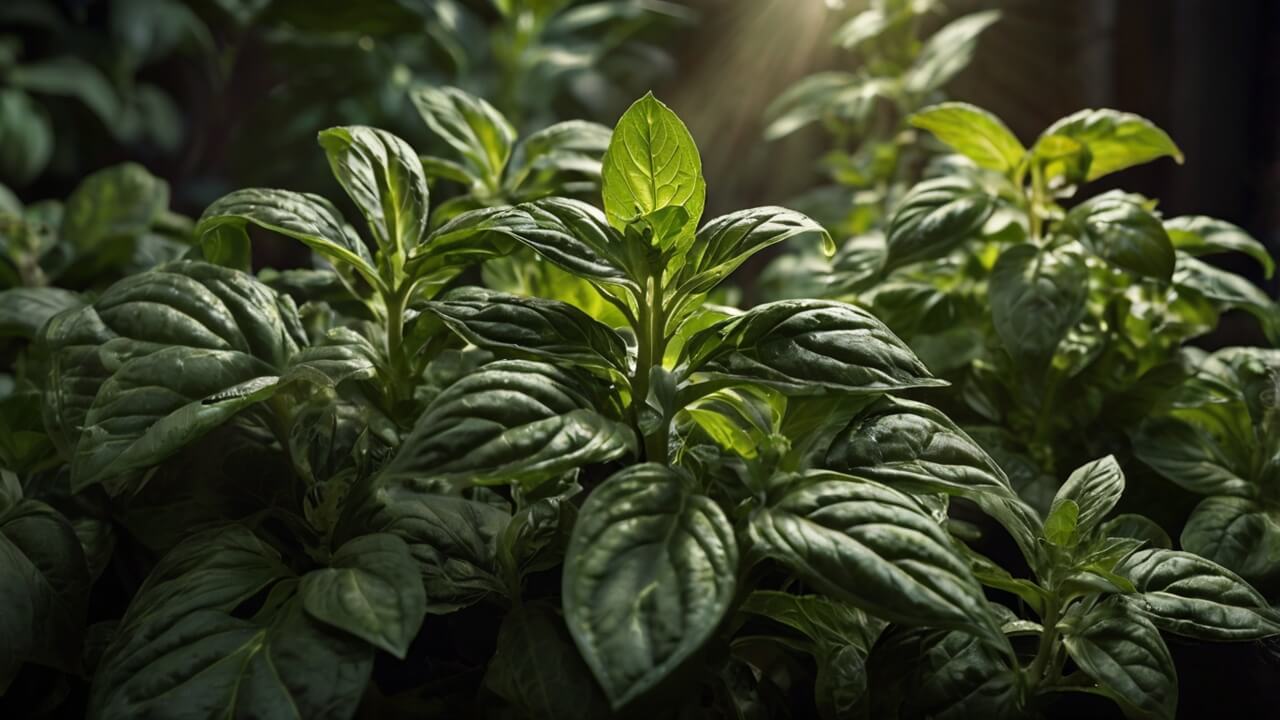
Ingredients:
- 2 cups fresh African blue basil leaves
- 1 cup fresh parsley leaves
- 1/2 cup toasted pine nuts or walnuts
- 2 garlic cloves, minced
- 1/2 cup grated Parmesan cheese
- 1/2 cup extra-virgin olive oil
- 2 tablespoons lemon juice
- Salt and pepper to taste
Method:
- In a food processor, combine the basil, parsley, nuts, garlic, and Parmesan cheese. Pulse until coarsely chopped.
- With the motor running, slowly drizzle in the olive oil until the pesto reaches the desired consistency.
- Add lemon juice and season with salt and pepper to taste. Pulse a few more times to incorporate.
- Transfer the pesto to a bowl or airtight container. If not using immediately, cover the surface with a thin layer of olive oil to prevent discoloration.
Variations:
- Substitute pine nuts with almonds, cashews, or pistachios for a different nutty flavor.
- Add a tablespoon or two of sun-dried tomatoes for a burst of umami flavor.
- Replace Parmesan with Pecorino Romano or nutritional yeast for a dairy-free option.
- Incorporate a handful of fresh spinach or arugula for added nutrients and a slightly bitter note.
Serving Suggestions:
- Toss with hot pasta and top with extra Parmesan for a quick and flavorful meal.
- Spread on sandwiches or bruschetta for a vibrant and herbaceous kick.
- Use as a flavorful marinade or sauce for grilled meats, fish, or vegetables.
- Swirl a dollop into soups or stews for an instant flavor boost.
- Serve as a dip for fresh vegetables or crusty bread.
Goat Stew with African Blue Basil
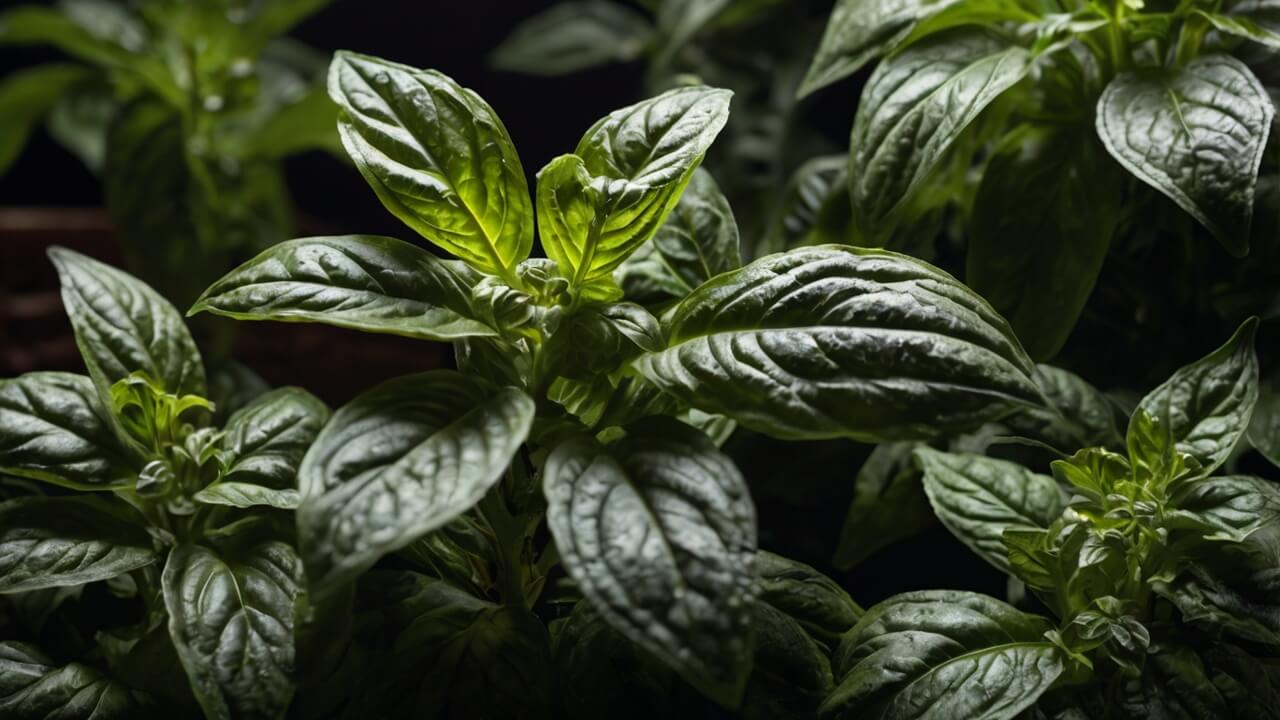
Ingredients:
- 2 lbs goat meat, cut into 1-inch pieces
- 2 tablespoons olive oil
- 1 large onion, diced
- 4 cloves garlic, minced
- 2 tablespoons tomato paste
- 1 cup red wine (or beef broth)
- 2 cups beef broth
- 2 bay leaves
- 1 teaspoon ground coriander
- 1 teaspoon ground cumin
- 1 teaspoon smoked paprika
- 1/2 teaspoon cayenne pepper (or to taste)
- 1 cup diced tomatoes (canned or fresh)
- 1 cup diced carrots
- 1 cup diced potatoes
- 1/2 cup chopped African blue basil, plus more for garnish
- Salt and black pepper, to taste
Cooking Process:
- Season the goat meat with salt and black pepper.
- Heat olive oil in a large Dutch oven or heavy-bottomed pot over medium-high heat. Working in batches, brown the goat meat on all sides, about 2-3 minutes per batch. Transfer browned meat to a plate and set aside.
- Reduce heat to medium, and add the onions to the pot. Cook for 2-3 minutes until translucent, then add the garlic and cook for another minute.
- Stir in the tomato paste, red wine (or beef broth), beef broth, bay leaves, coriander, cumin, smoked paprika, and cayenne pepper. Bring to a simmer.
- Return the browned goat meat to the pot, along with any accumulated juices. Add the diced tomatoes, carrots, and potatoes. Cover and simmer for 1 1/2 to 2 hours, or until the meat is fork-tender.
- Remove the bay leaves, and stir in the chopped African blue basil. Taste and adjust seasoning with salt and black pepper as needed.
- Garnish with additional chopped African blue basil before serving.
Cultural Significance:
Goat stew is a beloved dish in many African countries, particularly in West and North Africa. It is often served during special occasions and celebrations, as goat meat is considered a delicacy. The addition of African blue basil, also known as clove basil, adds a unique and distinctive flavor profile that reflects the rich culinary heritage of the region.
Flavor Notes:
African blue basil has a warm, clove-like aroma and a slightly licorice-like taste, which complements the richness of the goat meat and the bold spices in the stew. The herb’s unique flavor profile adds depth and complexity to the dish, elevating it from a simple goat stew to a truly exceptional culinary experience.
African Blue Basil Vinaigrette
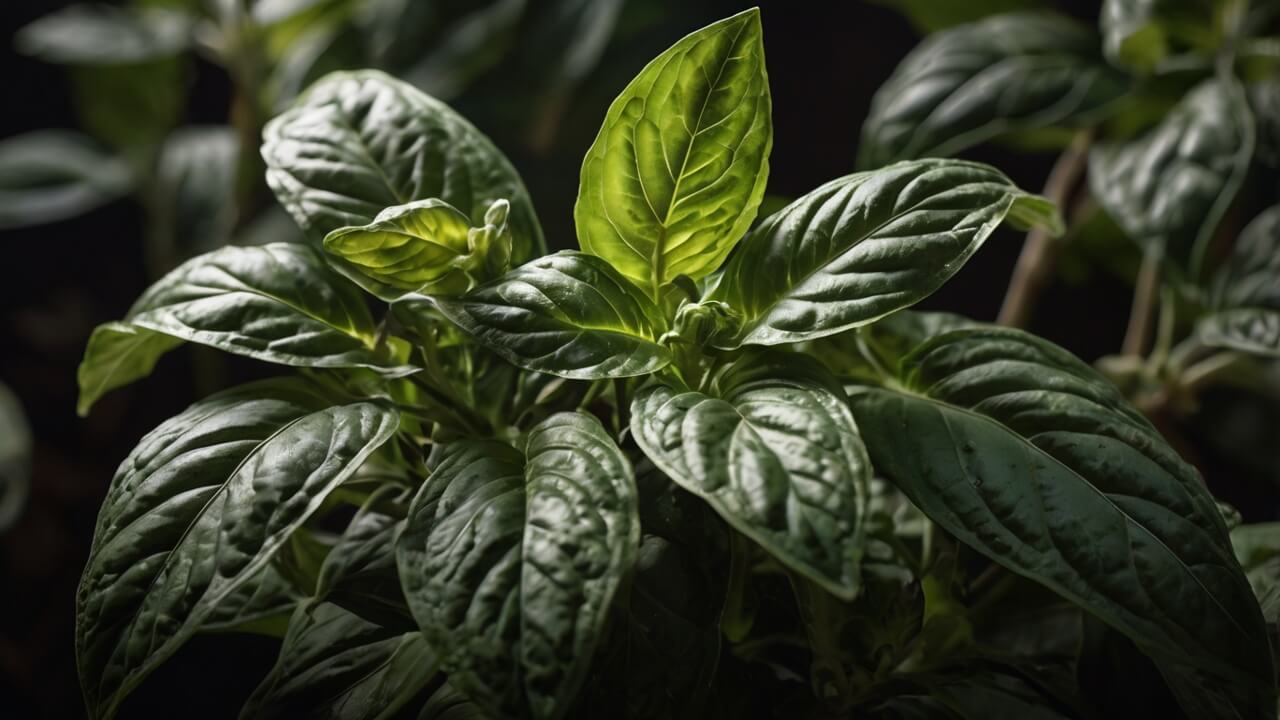
Ingredients:
- 1 cup fresh African blue basil leaves, packed
- 1/2 cup extra virgin olive oil
- 1/4 cup red wine vinegar
- 1 small shallot, minced
- 1 garlic clove, minced
- 1 teaspoon Dijon mustard
- Salt and freshly ground black pepper, to taste
Preparation:
- In a blender or food processor, combine the African blue basil leaves, olive oil, red wine vinegar, shallot, garlic, and Dijon mustard.
- Pulse the mixture until well blended and the basil is finely chopped.
- Season with salt and pepper to taste.
- Transfer the vinaigrette to a jar or bottle and refrigerate until ready to use.
Usage Ideas:
This vibrant and flavorful vinaigrette can be used in a variety of ways:
- Drizzle over fresh green salads for a burst of flavor.
- Use as a marinade for grilled vegetables or proteins.
- Toss with cooked pasta or grains for a flavorful side dish.
- Serve as a dipping sauce for crusty bread or vegetables.
The unique flavor of African blue basil adds a delightful depth to this vinaigrette, making it a versatile addition to your culinary repertoire. Experiment with different salad combinations or use it to elevate your favorite dishes.
Cooking Tips and Storage
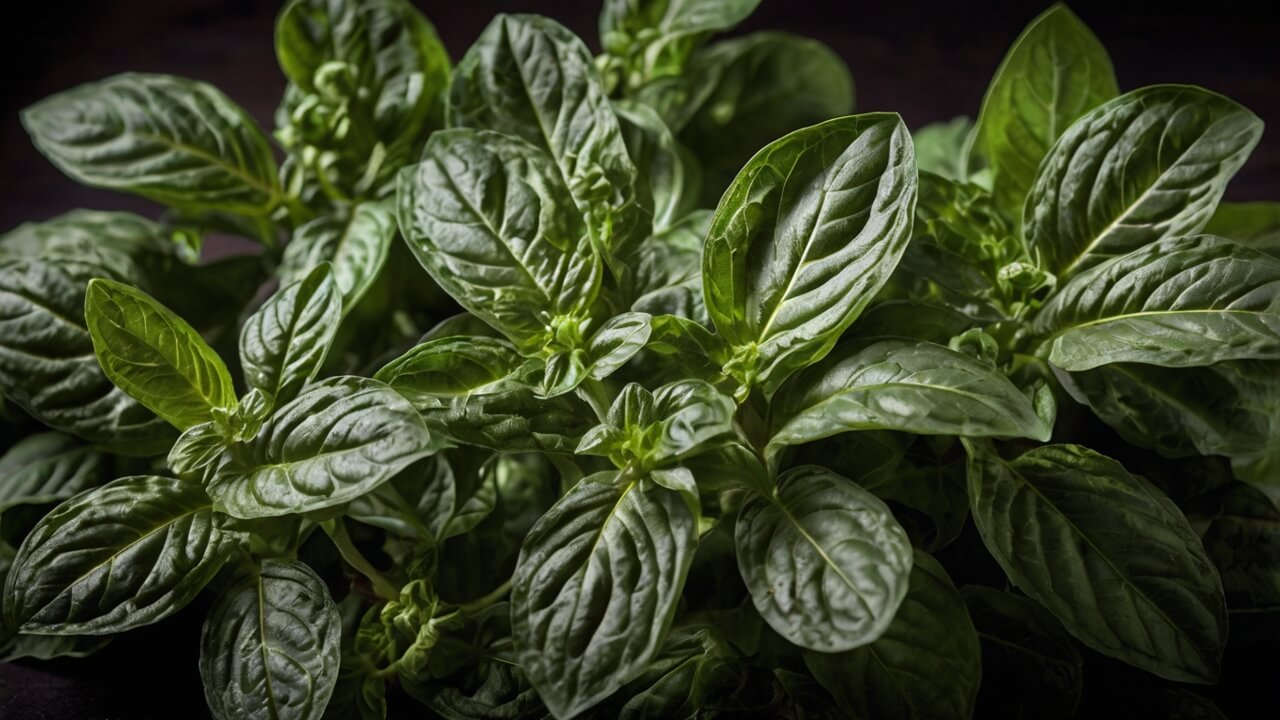
Proper storage is crucial to preserve the vibrant flavor and aroma of African blue basil. Here are some tips to ensure your fresh basil stays fresh for as long as possible:
- Refrigeration: Wrap the basil stems in a damp paper towel and store them in an airtight plastic bag or container in the refrigerator. This helps prevent wilting and keeps the leaves fresh for up to a week.
- Freezing: If you have an abundance of basil, you can freeze it for later use. Chop or blend the leaves with a little olive oil or water, and freeze the mixture in ice cube trays. Once frozen, transfer the cubes to an airtight freezer bag or container for long-term storage.
- Drying: Dried African blue basil can be a convenient option for adding flavor to dishes. Tie the stems together and hang them upside down in a cool, dry place with good air circulation. Once completely dry, remove the leaves from the stems and store them in an airtight container away from direct sunlight.
If you find yourself without African blue basil, there are several substitutes you can use in recipes:
- Thai Basil: Thai basil has a similar flavor profile to African blue basil, with a slightly spicy and anise-like taste. It can be used as a substitute in many dishes, such as curries, stir-fries, and marinades.
- Sweet Basil: While not as aromatic as African blue basil, sweet basil can be a suitable substitute in some recipes, particularly those that feature milder flavors.
- Mint: Fresh mint leaves can provide a refreshing and slightly minty flavor that complements some dishes traditionally made with African blue basil.
Remember, substitutions may alter the flavor profile slightly, but they can still add depth and complexity to your dishes. Experiment with different herbs and find the combination that suits your taste preferences.
Origins and Significance of African Blue Basil
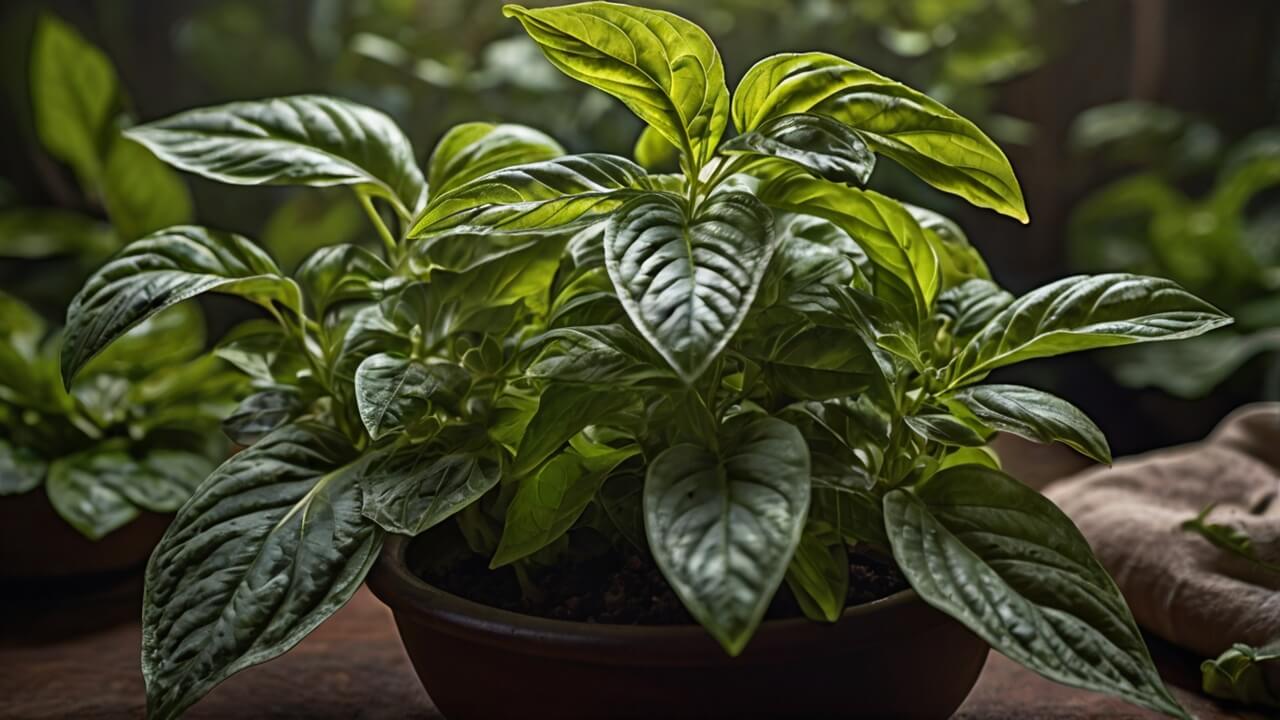
African blue basil, also known as Ocimum kilimandscharicum or clove basil, is a unique and flavorful herb native to the tropical regions of East and West Africa. This aromatic plant has been an integral part of traditional African cuisine for centuries, valued for its distinctive aroma and versatility in various dishes.
In many African cultures, African blue basil is not just a culinary ingredient but also holds significant cultural and medicinal importance. The herb is believed to have healing properties and is often used in traditional remedies to treat various ailments. Its strong, clove-like fragrance is also said to have spiritual and ritualistic significance in some communities.
The significance of African blue basil in African cuisine cannot be overstated. Its robust flavor profile, with notes of clove, licorice, and mint, adds depth and complexity to a wide range of dishes, from stews and curries to chutneys and sauces. The herb is particularly prevalent in the cuisines of regions like Ethiopia, Eritrea, and Somalia, where it is used to season meat dishes, vegetable preparations, and even beverages.
Nutritional Value and Potential Health Benefits of African Blue Basil
African blue basil, scientifically known as Ocimum gratissimum, is a flavorful and aromatic herb that has been used in traditional medicine for centuries. This herb is a rich source of various nutrients and compounds that may offer potential health benefits.
Nutritional Profile
African blue basil is a nutrient-dense herb that contains:
- Vitamins: It is a good source of vitamins A, C, and K, as well as B-complex vitamins like folate and niacin.
- Minerals: The herb is rich in minerals such as calcium, iron, magnesium, and potassium.
- Antioxidants: African blue basil contains potent antioxidants like eugenol, rosmarinic acid, and apigenin, which help neutralize harmful free radicals in the body.
Potential Health Benefits
- Anti-inflammatory Properties: Studies have shown that compounds like eugenol and rosmarinic acid in African blue basil possess anti-inflammatory properties, which may help alleviate inflammation-related conditions like arthritis, asthma, and inflammatory bowel diseases.
- Antimicrobial Activity: The essential oils and phytochemicals present in African blue basil have demonstrated antimicrobial effects against various bacteria, fungi, and viruses. This property may aid in fighting infections and promoting overall health.
- Blood Sugar Regulation: Preliminary research suggests that African blue basil may have a positive impact on blood sugar levels. Its compounds have been found to enhance insulin sensitivity and improve glucose metabolism, making it potentially beneficial for individuals with diabetes or at risk of developing the condition.
- Neuroprotective Effects: Some studies have indicated that the antioxidants in African blue basil, such as eugenol and rosmarinic acid, may have neuroprotective properties. These compounds may help protect the brain from oxidative stress and potentially reduce the risk of neurodegenerative diseases like Alzheimer’s and Parkinson’s.
- Digestive Health: African blue basil has been traditionally used to alleviate digestive issues like nausea, bloating, and indigestion. Its carminative and anti-spasmodic properties may help soothe the digestive system and promote overall gut health.
While these potential health benefits are promising, it’s important to note that more research is needed to fully understand the efficacy and safety of African blue basil for medicinal purposes. As with any supplement or herbal remedy, it’s advisable to consult with a healthcare professional before incorporating African blue basil into your routine, especially if you have any underlying medical conditions or are taking medications.
Here is the H2 and content for the Growing African Blue Basil section, formatted in markdown:
Growing African Blue Basil
African blue basil (Ocimum kilimandscharicum x basilicum), also known as camphor basil or clove basil, is a hybrid variety that thrives in warm, humid environments. Originally from the Kenyan and Tanzanian regions, this aromatic herb prefers well-draining soil and full sun exposure.
Growing Conditions:
- Temperature: African blue basil flourishes in temperatures between 65°F to 80°F. It cannot tolerate frost or freezing temperatures.
- Sun Exposure: Plant in an area that receives at least 6-8 hours of direct sunlight per day.
- Soil: This basil variety prefers well-draining, nutrient-rich soil with a pH between 6.0 and 7.5. Amend soil with compost or aged manure before planting.
Planting Tips:
- Seeds vs. Transplants: You can start from seed or purchase transplants from a nursery. Seeds should be sown 1/4 inch deep and spaced 12-18 inches apart.
- Containers: African blue basil grows well in containers at least 8 inches deep and wide. Use a well-draining potting mix.
- Companion Planting: Plant alongside tomatoes, peppers, or marigolds to deter pests and encourage growth.
Care Instructions:
- Watering: Keep soil consistently moist but not waterlogged. Water at the base of the plant in the morning.
- Fertilizing: Feed every 4-6 weeks with a balanced, water-soluble fertilizer or compost tea.
- Pruning: Regularly pinch off flower buds to encourage bushier growth and higher yields of flavorful leaves.
- Pest Control: Watch for aphids, spider mites, and thrips. Use insecticidal soap or neem oil for organic pest management.
With the right growing conditions and care, you can enjoy a bountiful harvest of aromatic African blue basil to use in your favorite recipes!
Conclusion
The versatility of African blue basil is truly remarkable. This aromatic herb adds a distinct and captivating flavor to a wide range of dishes, from savory stews and pestos to refreshing salsas and vinaigrettes. Its unique clove-like aroma and slightly sweet taste make it a valuable addition to any culinary repertoire.
Throughout this article, we’ve explored various recipes that showcase the potential of African blue basil. Whether you’re looking to add a burst of flavor to your main courses, elevate your side dishes, or create tantalizing condiments, this herb is a true culinary gem.
We encourage you to experiment with the recipes provided and let your creativity shine. Don’t be afraid to tweak them to suit your personal preferences or dietary restrictions. The joy of cooking lies in the freedom to explore and discover new flavors.
As you incorporate African blue basil into your kitchen, you’ll not only elevate your dishes but also embark on a culinary journey that celebrates the rich diversity of global flavors. So, embrace this unique herb, and let it transport your taste buds to new and exciting realms.

